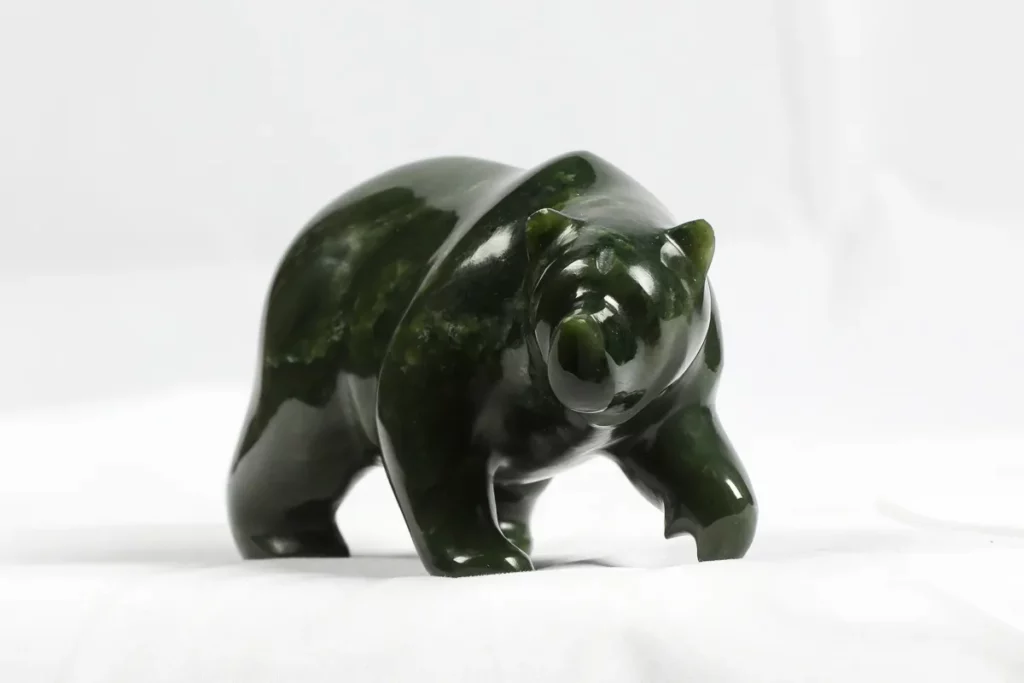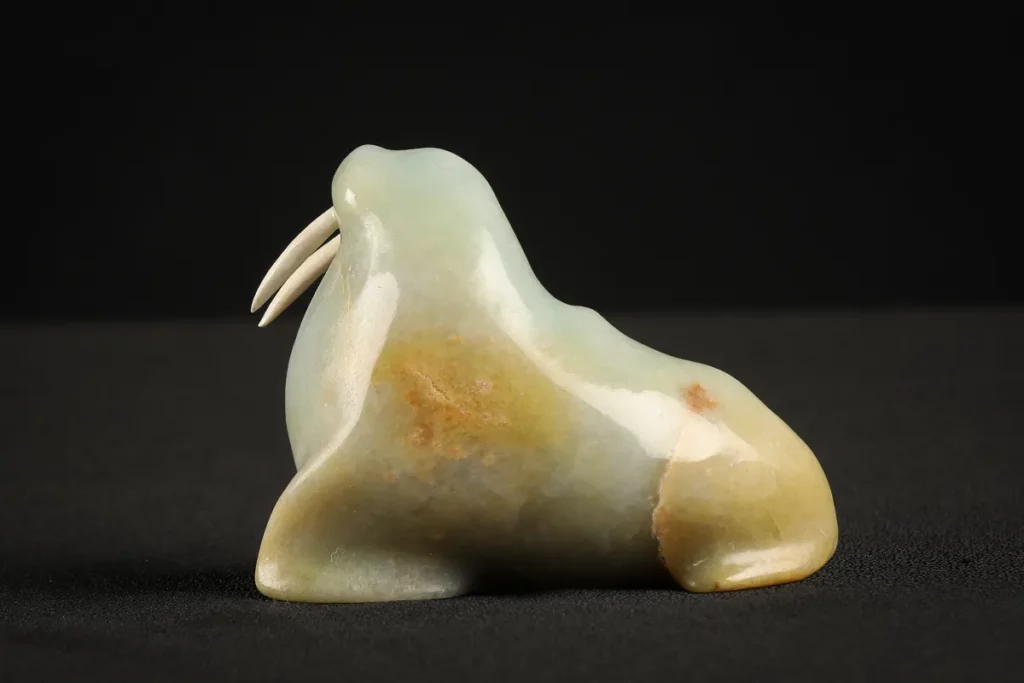News & Articles
Latest EA Studios Blog Posts
History Of Jade
Jade is a beautiful stone that ranges in many different colours, but most people are familiar with green jade, which has creamy swirls of white throughout it. This green mineral is regarded very well and strongly in different cultures and is used to craft jewellery, sculptures, ornaments and more. So why exactly is jade such a popular gemstone? Keep reading to learn more about the history of jade, where it comes from, and the meaning and powers of jade.
A Revered Stone
The Chinese, Mayans, Aztecs and Māoris have prided jade for thousands and thousands of years. Throughout history, jade was used for many different applications, including to make axe heads, daggers, spear points and even sacred knives. Specifically, the Chinese favour jade for various reasons. There’s even a Chinese proverb that translates to, “gold has a price: jade is priceless.”
History Of Jade In Chinese Culture
Going back as far as 5000 BCE, we know that jade was used extensively in Chinese ritual ceremonies. Because jade lasted so long and is so durable, the Chinese believe it was linked to immortality. Additionally, jade is associated with good luck, purity, benevolence, and enhanced intelligence in Chinese culture.
The history of jade in Chinese culture includes many recurring motifs in Chinese jade sculptures, including butterflies, fish, birds, dragons, and bi (a flat circular disk with a hole in the center). It makes sense why contemporary China still prides jade and why it’s still such a large part of Chinese culture.
History Of Jade In Mesoamerica
Jade had a strong presence in Mesoamerica, and many Mesoamerican groups, like the Olmecs, Mayans and Aztecs, prized jade. Jade was used for many purposes, including medicinal, religious, adornment and artifacts.
Each Mesoamerican group had their preferences for jade. For example, the Olmecs liked jade bluer in colour, commonly known as “Olmec Blue,” while the Mayans and Aztecs preferred green stones, known as “Imperial Green.”
The Mayans had great spiritual and religious reverence for jade, and they would wear pendants that depicted “mirror gods,” such as the sun god Kinich Ahau, who is shown with a mirror on his forehead. In addition, they associated the green stone with water and vegetation, along with life and death.
If families could afford it, they would put jade beads into the mouths of dying family members while they were on their deathbed. Then, their family would remove the beads and rub them gently on the deceased’s face once they died. The Mayans believed that jade stones absorbed the spirit and soul.

History Of Jade In Māori Culture
In Māori culture, jade has been used for adornment and artifacts for hundreds of years. The Māori call jade pounamu, which means the God stone. They believe that jade carvings have the power to help enhance the life of the wearer and that the stone can hold the spirits of their ancestors.
Jade was also an indicator of high social standing, and tribal chiefs typically wore pounamu carvings. Chiefs exchanged these green stones between tribes after brokering peace after conflicts. Because of this, jade is considered to have status and be sacred.
Where Does Jade Come From?
Jade can be found in many different parts of the world and is commonly mined in China, Canada, Russia, Guatemala, New Zealand and the Swiss Alps. When you’re looking to source jade from one of these countries, the first thing you need to figure out is if you want jadeite or nephrite. Nephrite commonly occurs in many different parts of the world, whereas jadeite is more challenging to find.
Jadeite Versus Nephrite
You may be wondering exactly what the difference between these two varieties is. For a long time, people didn’t even realize there were two different varieties of jade. They appear very similar when you’re looking at them side to side, and the difference between them is actually due to a difference in chemical composition.
While these varieties of jade might look very similar at a glance, jadeite and nephrite do have fundamental differences.
Nephrite Jade
When you’re looking at the market to buy jade, whether it’s a sculpture or jewellery, it is very likely that you’re looking at nephrite jade. The reason for this is because it is much more abundant in the world. Because there’s more of it in the world, it is also the more affordable jade option.
Nephrite jade rates at a 6-6.5 on the Mohs scale. A great way to test whether or not something is jadeite or nephrite is to turn it on its side and try to scratch it. If it leaves a small white mark, you know that it’s nephrite and not jadeite.
The most valuable nephrite is extremely pale or as close to a white colour as possible. But overall, nephrite jade is the most common and affordable variety of jade.
Jadeite Jade
Jadeite is very similar to diamonds because they both form in metamorphic rocks exposed to intense pressure. We only see jadeite in regions that are commonly susceptible to earthquakes. The shifting tectonic plates bring these metamorphic rocks to the surface. Jadeite can also be found in areas with significant erosion.
As we mentioned earlier, while nephrite is commonly found in many different countries in the world, jadeite is only found in certain areas. Some notable places where you can find jadeite are Kazakhstan, Japan, Guatemala, San Benito County in California, Russia and Myanmar. Myanmar is estimated to produce about 70% of the world’s jadeite supply.
Because jadeite is formed under more pressure than nephrite, it is harder than nephrite. Jadeite typically rates at a 6.5-7 on the Mohs scale.

Jade Art Sculptures
Due to the rarity of jadeite, it’s usually much more expensive than nephrite. Larger scale jade pieces, such as jade art sculptures, would typically be carved from nephrite because of two factors. Firstly, it is much more inexpensive for artists to source nephrite instead of jadeite, and secondly, nephrite is softer than jadeite, so it’s easier to work with.
Meaning & Power Of Jade
Jade holds many different meanings, and many people believe this green stone is imbued with power and metaphysical properties. Earlier, we mentioned the reverence that jade has in Chinese culture. It is considered an auspicious stone. Generally, people associate jade stones with longevity, abundance and wisdom.
Healing Properties Of Jade
Many believe that jade has both physical and mental healing properties. Jade has a long history of being a protective talisman, and many people associate this emerald gemstone as a potent healing stone.
People believe that jade can help with the kidneys, bladder and spleen. Additionally, individuals believe that jade can also help with your emotional and mental well-being by helping you clear negative thinking and encourage self-sufficiency.
Jade is a very popular choice for jewellery as many believe wearing it and keeping it close can help with physical and mental healing!
Whether you’re looking for jade because you like the way it looks or you’re looking to take advantage of its healing properties, it is essential to understand the history of jade and the two different varieties of jade.
Are you looking for a jade art piece to add to your home or office? EA Studios has a vast collection of jade art sculptures from Canadian artist David Wong. View our collection here. We offer appointments in our Calgary studio to view our more prominent art pieces before purchase. Book your appointment here.